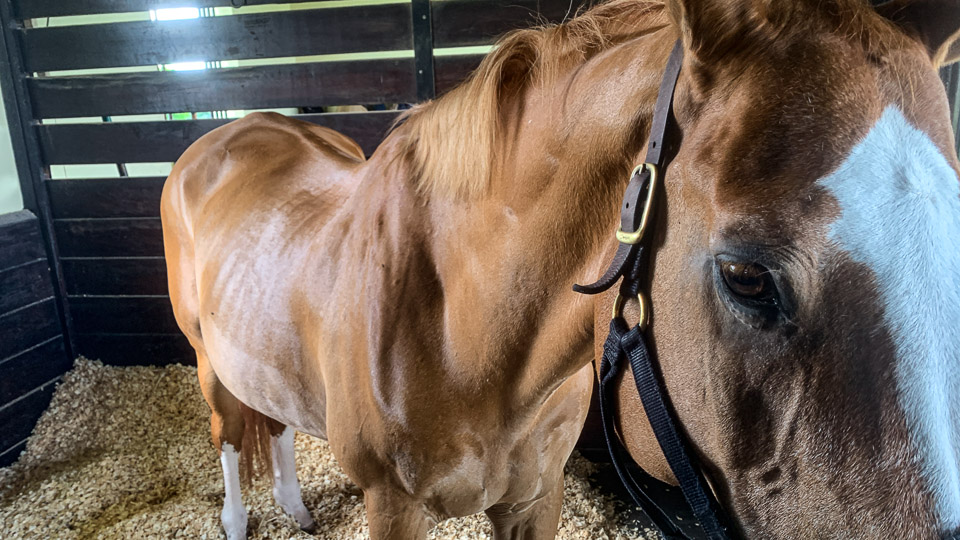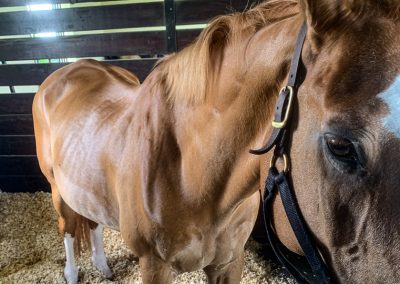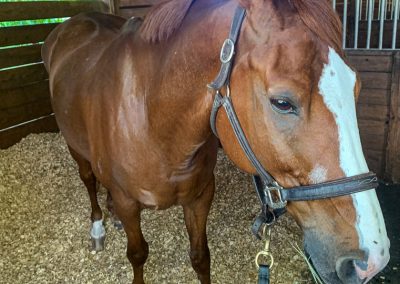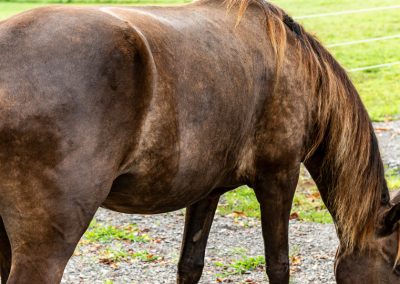
Horse Coat Color – Base Coat Colors Of Red And Black
Independent of what a horse looks like, there are only 2 base colors of horses – red and black. From there horses layer modifiers and dilutors and then add on top of them patterns made up of white hairs that are base hairs without any pigment. Over all of this, if a horse has the gene for graying as they age then they will eventually turn gray over time.
**CONTINUED IN ARTICLE TAB**
Related material – Sometimes I have a lot of material here that I have written, podcasted, video blogs and other things. They will be listed in this tab.
Use the browser back button or menu to return to the index of topics.
⬇︎ CLICK ANY IMAGE BELOW TO REVEAL MORE INFORMATION ⬇︎ I can’t believe I don’t have a black horse to show you. I’m on it! But the reason is that most black horses have the Aguti gene that limits the expression of black to the points creating the bay coat color.
Independent of what a horse looks like, there are only 2 base colors of horses – red and black. From there horses layer modifiers and dilutors and then add on top of them patterns made up of white hairs that are base hairs without any pigment. Over all of this, if a horse has the gene for graying as they age then they will eventually turn gray over time.
The gene that determines if a horse is red or black is the gene known as the Black Factor and is given the abbreviation “E.” It is a dominant determinant so if a horse has an E from each parent it will be EE and black. The recessive Black Factor is abbreviated as “e.” Because of the dominance, if only one parent contributes an “E” while the other contributes an “e” then the result is still a black base color in the foal. If both parents contribute the recessive Black Factor “e” so the foal’s Black Factor gene combination is “ee” then there will not be a black foal. Instead, the foal with an “ee” has a base color of red.
EE or Ee foals will have a base of black. ee foals will have a base coat of red which we call chestnut or sorrel depending on what you are taught. But genetically a chestnut and sorrel are the same.
- If you breed an EE to an EE or an EE to an Ee or an EE to an ee then 100% of the foals will be black. The resulting pairs will be one of the following: EE, Ee and eE. Each pair will have a dominant E yielding 100% black base.
- If you breed an Ee to an Ee then 75% will be black and 25% will be red. The resulting pairs will be one of the following: EE, Ee, eE and ee. 3 out of 4 possible results have a dominant E while 1 out of 4 have no dominant E.
- If you breed an Ee to an ee then 50% of the foals will be black and 50% will be red. The resulting pairs will be one of the following: Ee and ee. 2 out of 4 possible results have a dominant E while 2 out of 4 have no dominant E.
- If you breed an ee to an ee then 100% will be red. The resulting pairs will all be ee with no dominant E.
All horses on the planet are either black or red but then other dominant genes modify this creating the bay and the gray. Further, these colors are diluted by additional genes to create the different shades such as palomino and cremello. Expressive genes will add markings such as face markings, spots, dorsal stripes and white body markings. However, they all are on top of the base colors.
Any videos related to this topic will be added here. Stay tuned or comment a request.
- Additional tables
- Links to other in house articles
- Links to outside articles
- Reference material used in developing this topic.
There are no related articles here if you don’t see linked items.





I think a sorrel is “red” all over with red mane and tail and a chestnut is varying shades of “red” with black and/or white hairs in the mane and/or tail. Whatdoyouthink?
I would like to see several references for this or any definition for the difference. It is like the word “colt” where most think this is a male foal yet there is a portion of horse owners who use this for any foal (as in “colt starting” where I always ask about the filly starting – I’m bad).
In my practice, I always ask the owner what color the horse is. In TB and WB it’s always a chestnut. With QH’s it is a mix between the two with the owner never knowing which is correct. Thanks for this though.